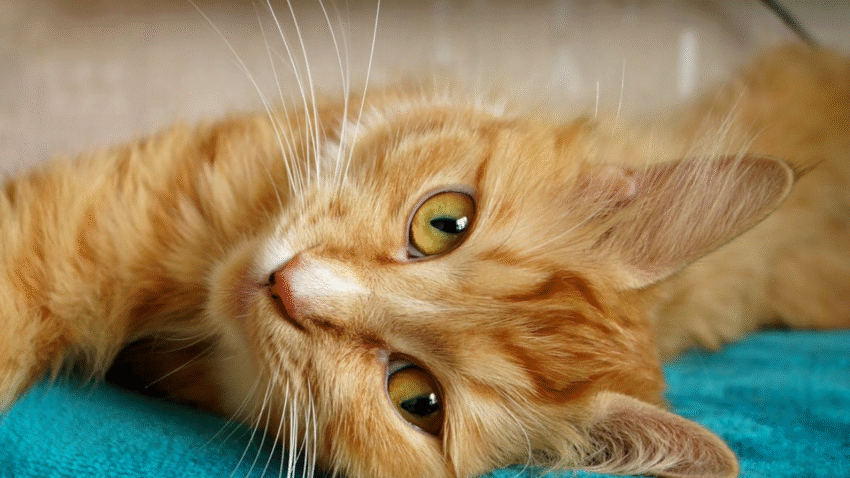Introduction
Does your cat often have an upset stomach, loose stools, or throw up hairballs more than usual? These can all be signs of digestive issues — and diet plays a major role. In this guide, you’ll learn how to prevent digestive issues in cats through diet. With the right foods, feeding habits, and adjustments, you can help your cat enjoy a healthier gut and a happier life.
Why Digestive Health Matters for Cats
A cat’s digestive system is sensitive and finely tuned to a meat-based diet. Any disruptions — from poor-quality food to abrupt changes — can result in vomiting, diarrhea, gas, or constipation. Long-term digestive problems may also lead to weight loss, nutrient deficiencies, and chronic discomfort.
Supporting your cat’s digestive system with the right diet helps:
- Improve nutrient absorption
- Reduce stomach upset
- Support a stronger immune system
- Keep stools consistent and odor-controlled
The good news is that most feline digestive problems can be managed — or even prevented — with a few smart dietary changes.
Step-by-Step Guide to Supporting Digestive Health Through Diet
1. Feed a High-Quality, Meat-Based Diet
Cats are obligate carnivores. They thrive on high-protein, low-carb diets. Choose foods that list meat (like chicken, turkey, or fish) as the first ingredient. Avoid fillers like corn, wheat, soy, and artificial additives, which are harder for cats to digest.
Look for labels that say:
- “Complete and balanced” nutrition
- Limited ingredient formulas (especially for sensitive cats)
- Grain-free, if recommended by your vet
2. Avoid Frequent Food Changes
Switching foods too quickly can shock your cat’s digestive system. Always transition to new food over 7–10 days by gradually mixing increasing amounts of the new food with the old.
Transition schedule:
- Days 1–3: 75% old food, 25% new
- Days 4–6: 50% old, 50% new
- Days 7–9: 25% old, 75% new
- Day 10: 100% new food
3. Add Moisture to Their Diet
Hydration is key for digestion. Dry kibble alone can lead to constipation or dehydration, especially in older or indoor cats. Add moisture by:
- Feeding wet/canned food
- Adding water or broth (no salt or onions) to dry food
- Offering raw or freeze-dried food rehydrated with water
Cats naturally have a low thirst drive, so it’s important to give them moisture through meals.
4. Feed Smaller, More Frequent Meals
Large, infrequent meals can overwhelm your cat’s digestive system. Instead, try:
- Two to three small meals per day
- Scheduled feeding times (vs. free-feeding)
- Using puzzle feeders to slow down eating
Slow, portion-controlled meals help prevent vomiting, bloating, and indigestion.
5. Introduce Fiber Gradually
Some cats benefit from extra fiber to regulate digestion and reduce hairballs. Add fiber through:
- Pumpkin puree (1 tsp daily)
- Psyllium husk (vet-approved amount)
- Specialized hairball or digestion formulas
Always introduce fiber slowly and monitor changes in stool consistency.
Common Mistakes to Avoid
1. Feeding Inappropriate Human Foods
Many human foods — like dairy, onions, garlic, and fatty meats — can upset your cat’s stomach or be toxic. Stick with veterinarian-approved treats and meals.
2. Giving Too Many Treats
Excess treats, especially those with additives or low-quality ingredients, can cause stomach upset. Treats should make up no more than 10% of daily calories.
3. Ignoring Food Sensitivities
Some cats have intolerances to ingredients like chicken, beef, or grains. If your cat shows signs of chronic upset, ask your vet about trying an elimination or hypoallergenic diet.
4. Letting Water Intake Drop
Cats that don’t drink enough water are at higher risk for constipation and urinary issues. Always provide clean, fresh water in multiple locations.
5. Overfeeding or Free-Feeding
Too much food or leaving it out all day can lead to weight gain and poor digestion. Use a measuring cup to control portions and stick to a consistent feeding schedule.
Extra Tips & Recommendations
1. Try Probiotics
Probiotic supplements can support your cat’s gut health by balancing good bacteria in the intestines. Look for feline-specific products or ask your vet for a recommendation.
2. Include Digestive Enzymes
Some cats benefit from enzymes that help break down food more efficiently — especially seniors or cats with digestive disorders. These can be mixed into food with your vet’s approval.
3. Use Elevated Bowls
For cats prone to vomiting, raised feeding bowls can help food travel down the digestive tract more smoothly and reduce regurgitation.
4. Address Hairballs Proactively
Long-haired cats or heavy groomers may need help passing hairballs. Add hairball-control food, fiber, or a small amount of petroleum-free hairball paste if needed.
5. Keep a Food Diary
Track what and when your cat eats, along with stool consistency, vomiting, or behavior changes. This helps identify triggers and supports your vet in diagnosing any problems.
Conclusion
Preventing digestive issues in cats through diet is all about quality ingredients, proper portions, and consistency. By feeding a high-protein, moisture-rich, and easily digestible diet, you’ll help your cat feel better, absorb more nutrients, and stay regular. Add a little fiber, go slow with any changes, and consult your vet if symptoms persist.
🐾 A healthy belly = a happy kitty. Start with the bowl, and the rest will follow.
